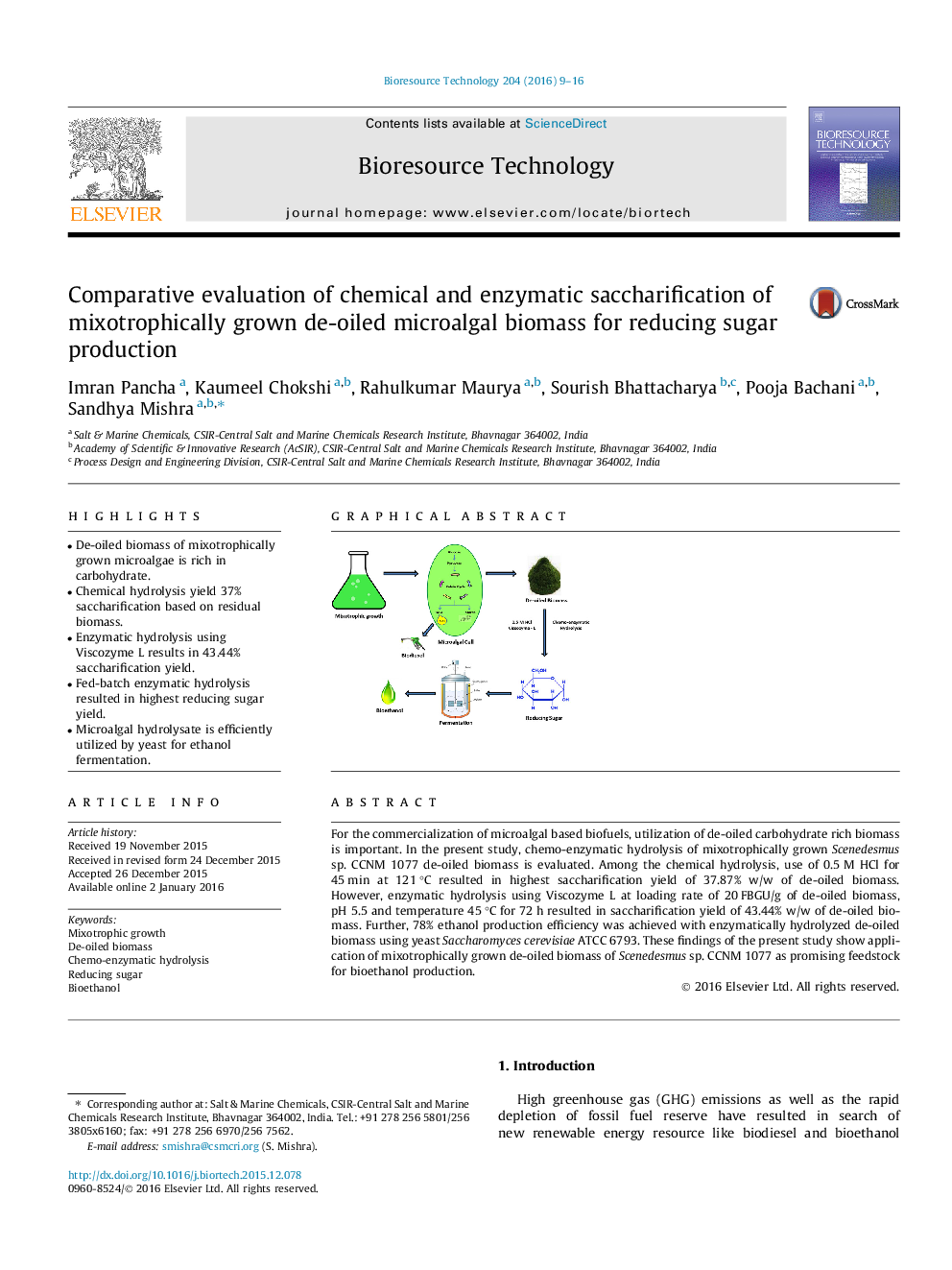| Article ID | Journal | Published Year | Pages | File Type |
|---|---|---|---|---|
| 679341 | Bioresource Technology | 2016 | 8 Pages |
•De-oiled biomass of mixotrophically grown microalgae is rich in carbohydrate.•Chemical hydrolysis yield 37% saccharification based on residual biomass.•Enzymatic hydrolysis using Viscozyme L results in 43.44% saccharification yield.•Fed-batch enzymatic hydrolysis resulted in highest reducing sugar yield.•Microalgal hydrolysate is efficiently utilized by yeast for ethanol fermentation.
For the commercialization of microalgal based biofuels, utilization of de-oiled carbohydrate rich biomass is important. In the present study, chemo-enzymatic hydrolysis of mixotrophically grown Scenedesmus sp. CCNM 1077 de-oiled biomass is evaluated. Among the chemical hydrolysis, use of 0.5 M HCl for 45 min at 121 °C resulted in highest saccharification yield of 37.87% w/w of de-oiled biomass. However, enzymatic hydrolysis using Viscozyme L at loading rate of 20 FBGU/g of de-oiled biomass, pH 5.5 and temperature 45 °C for 72 h resulted in saccharification yield of 43.44% w/w of de-oiled biomass. Further, 78% ethanol production efficiency was achieved with enzymatically hydrolyzed de-oiled biomass using yeast Saccharomyces cerevisiae ATCC 6793. These findings of the present study show application of mixotrophically grown de-oiled biomass of Scenedesmus sp. CCNM 1077 as promising feedstock for bioethanol production.
Graphical abstractFigure optionsDownload full-size imageDownload as PowerPoint slide
